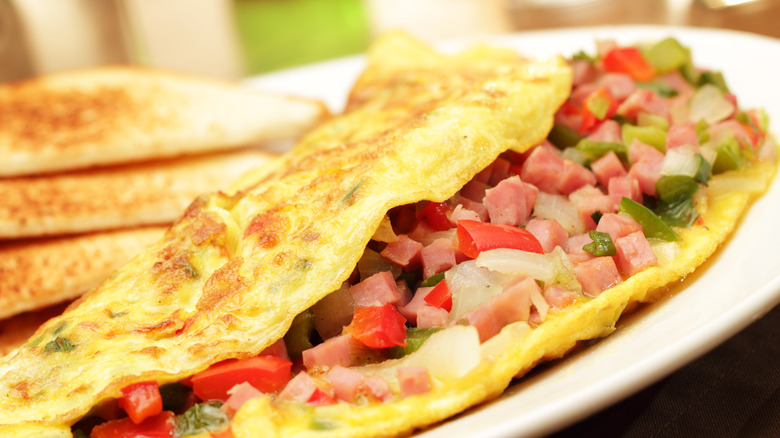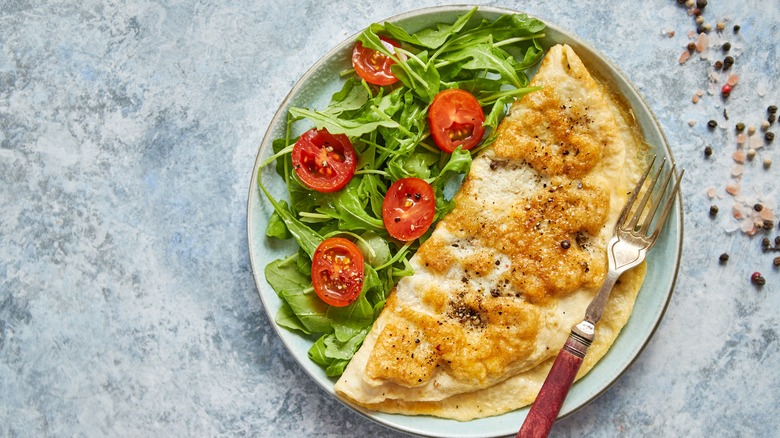The Steamy Way To Avoid A Runny Omelet
Oftentimes we forget about the humble yet super customizable omelet. We would rather go with a quick scramble or a sunny-side-up egg with a perfectly runny yolk for breakfast because we're hungry. But let's change that.
The problem most people have with omelets is the runny insides after folding the eggs over. The best way to avoid the runny center, logically, is to let the egg sit and cook in the pan without touching it until the top is set. However, you do that at the risk of overcooked rubbery spots on the bottom of the dish. The other option is to flip the omelet, but that's difficult and messy. So how are you supposed to achieve a perfectly set omelet?
In this case, steam is your friend. Proceed as you normally would, but when the eggs are just starting to set around the edges, lower your heat to medium-low and fit a lid over the eggs. The steam will gently cook the middle without overcooking everything else. You don't need to do this for very long — perhaps a minute, tops. You want the center to be slightly jiggly before folding it over because carryover cooking will set the inside perfectly while you butter your toast.
American and French omelets
A lid is also ideal if you prefer the French version of an omelet, which shouldn't have any brown spots on the outside, just a pale yellow color. Don't mistake an omelet for a slow scramble – the whole process should take no more than four minutes. Over medium-high heat, agitate the eggs constantly. When they're just set, add your warm fillings to the center and remove the pan from the heat. Place a tight-fitting lid on the skillet for one minute, or two minutes for a firmer interior, and roll and fold it onto the plate. Et voilà! The middle will be cooked perfectly still while retaining the gorgeous pale yellow exterior of a French omelet. Whichever your preference — an American omelet or French — a tight-fitting lid is your key to omelet success.
There's no need to get super fussy about fillings, which can be anything that strikes your fancy. If you have leftover cooked vegetables from dinner — whether roasted, grilled, or sautéed — they're the perfect addition and provide endless options. If you opt to make everything day of, you can still precook your omelet fillings, especially those that hold more water, like mushrooms or spinach. Adding meat to your omelet? Precook that, too. The meat spends so little time being cooked (more like warmed up) that precooking it is more sanitary. So brown your sausage and crisp your bacon before adding them. And, of course, cheese of any kind is always a welcome addition.

